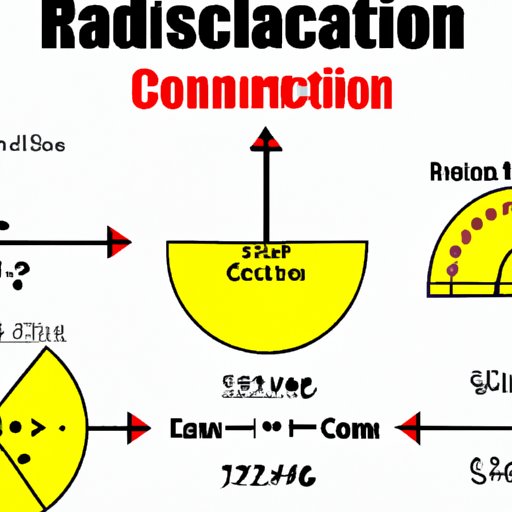Introduction
When it comes to measuring angles, there are two common ways to do so: degrees and radians. Degrees are commonly used in everyday life, such as measuring temperature or the angle of a triangle, while radians are more commonly used in math, science, and engineering. In this article, we will explore the difference between degrees and radians, the importance of radians, and how to convert degrees to radians.
Visuals
Visuals are a great way to explain the concept of radians to visual learners. One way to do so is to use diagrams or images, such as a circle with labeled degrees and radians. Another way is to use graphs to portray the relationship between degrees and radians. For example, a graph that shows the sine and cosine functions in both degrees and radians can be helpful in illustrating the transition between the two units of measurement.
Real-world examples
Radians may seem like an abstract concept, but they have many real-world applications. In physics, radians are used to measure the rotational position of a wheel or a planet, or the angle between two vectors. In engineering, radians are important for designing and building machines and structures that require precise measurements and calculations. For example, robotics engineers use radians to design robots that can move precisely and accurately.
Step-by-step instructions
Converting degrees to radians is a relatively simple process. The formula to convert degrees to radians is:
Radians = (Degrees x π) / 180
To begin, you need to identify the angle in degrees that you want to convert. Let’s say you have an angle of 45 degrees. To convert this to radians, you would use the formula above:
Radians = (45 x π) / 180 = π/4
So the angle in radians is π/4 radians.
Interactive examples
Interactive tools can be useful for readers to practice converting degrees to radians. An online calculator or a quiz can be used to provide a hands-on experience for the readers. With an online calculator, the readers can input the angle in degrees and get the answer in radians instantly. With a quiz, the readers can test their knowledge and practice converting different angles from degrees to radians.
Common mistakes
One common mistake people make when converting degrees to radians is forgetting to convert degrees to radians before using them in calculations. It is important to always remember to convert degrees to radians before calculating trigonometric functions such as sine, cosine, and tangent. Another common mistake is using the wrong formula to convert degrees to radians, or misinterpreting the formula altogether. To avoid these mistakes, it is helpful to practice and familiarize oneself with the formula and the process involved.
Conclusion
Radians may seem like an abstract concept, but they are crucial in math, science, and engineering for precise measurements and calculations. Visuals, real-world examples, step-by-step instructions, interactive examples, and a knowledge of common mistakes can all help in understanding radians and converting degrees to radians. By understanding radians, we can better understand the world around us and make more accurate calculations.
